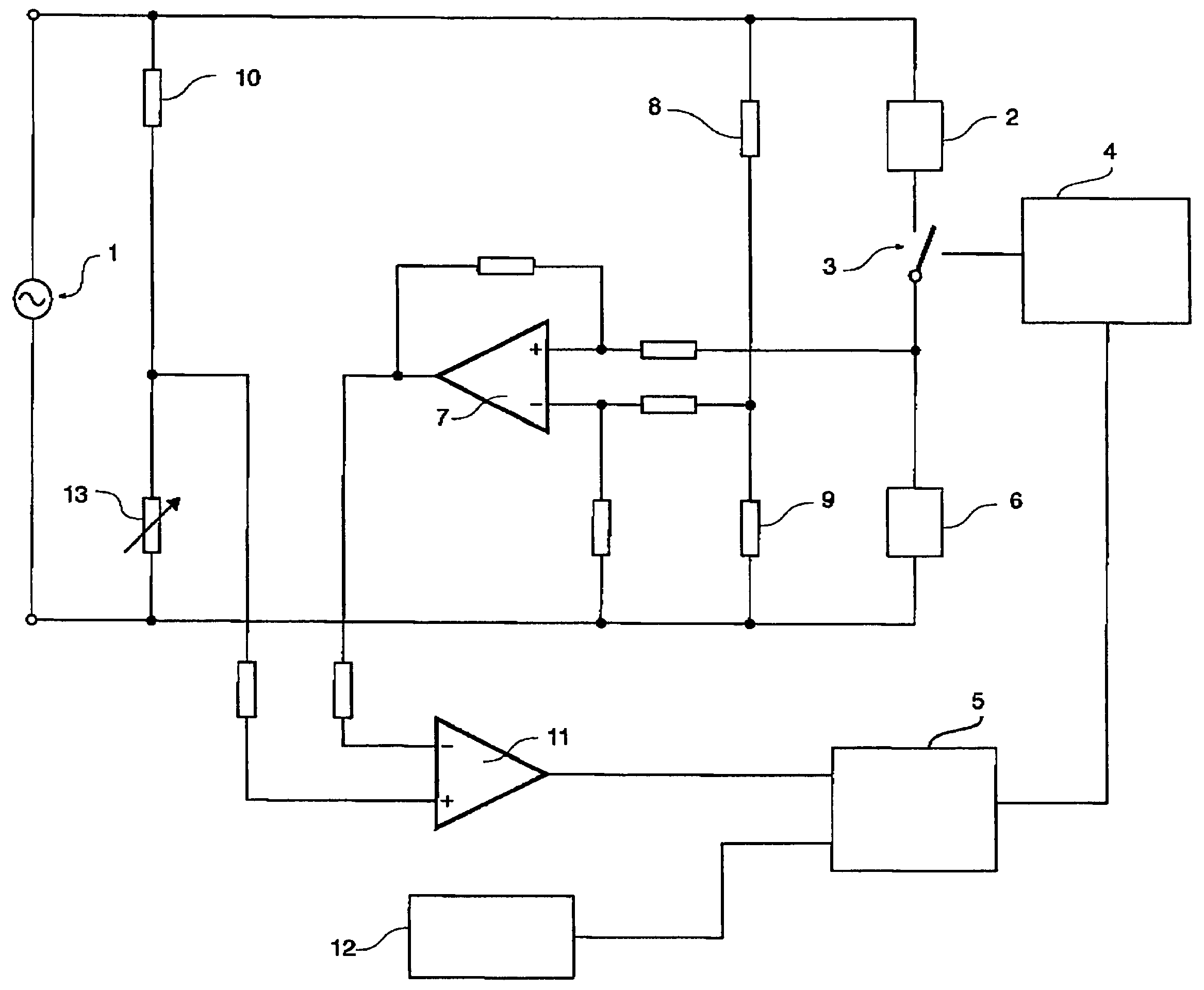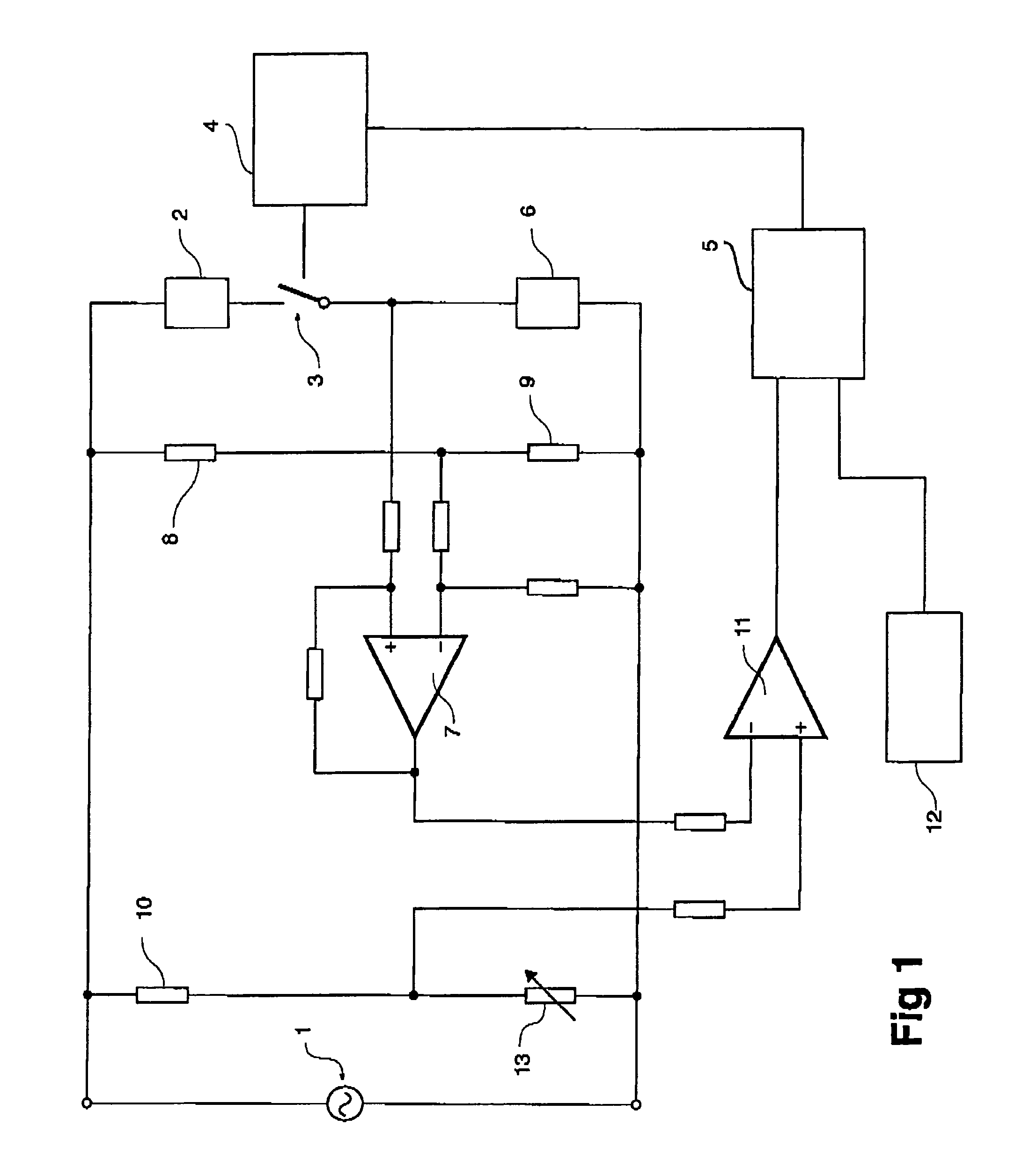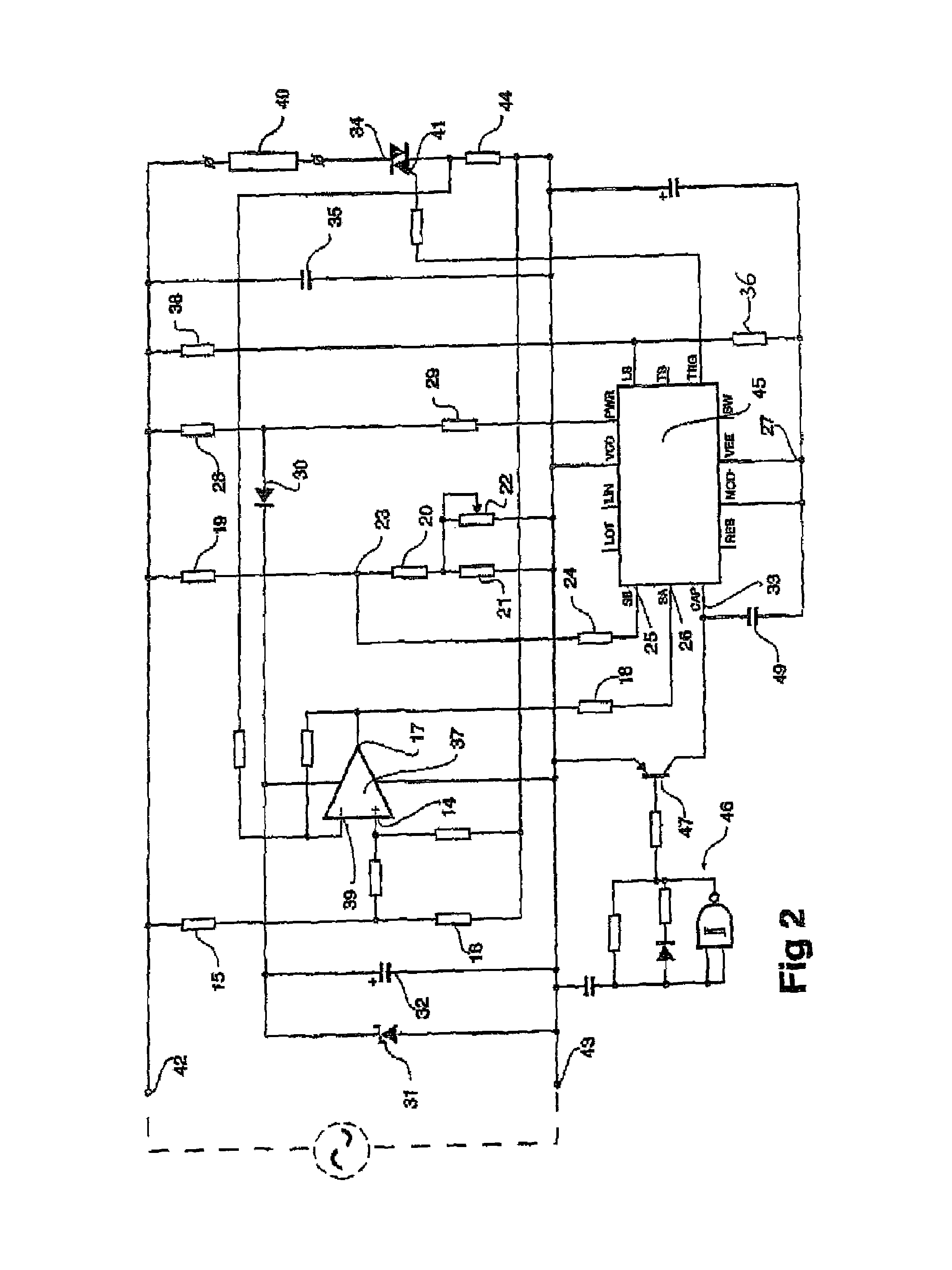Temperature control method for positive temperature coefficient type heating element
a technology of positive temperature coefficient and heating element, which is applied in the direction of high frequency current welding apparatus, electron beam welding apparatus, engine ignition, etc., can solve the problems of large temperature errors, difficult to achieve effective thermal coupling between the sensor and the heating element, and the possibility of subsequently measuring the temperature of the heating elemen
- Summary
- Abstract
- Description
- Claims
- Application Information
AI Technical Summary
Benefits of technology
Problems solved by technology
Method used
Image
Examples
Embodiment Construction
[0049]Referring to the drawings in detail, FIG. 1 shows a simplified circuit diagram of the invention. A mains voltage supply 1 energises a heating element 2 when a switch 3 is closed. The heating element has a non-zero temperature co-efficient of resistance. The switch is operated by switch controller 4, in response to signals from logic circuitry 5.
[0050]Current sensor 6 provides a signal to difference amplifier 7, which acts as a difference sensor. Resistors 8 and 9 form a zero set point controller. The resistors are selected so that the output of the difference amplifier is essentially zero when the heating element temperature is at its minimum operational value. This voltage divider formed by resistors 8 and 9 provides another input to the difference amplifier 7. Thus the output of the difference amplifier is an alternating voltage, whose magnitude is proportional to the change in output voltage of the current sensor due to changes in the resistance of the heating element.
[0051...
PUM
| Property | Measurement | Unit |
|---|---|---|
| temperature | aaaaa | aaaaa |
| voltage | aaaaa | aaaaa |
| DC voltage | aaaaa | aaaaa |
Abstract
Description
Claims
Application Information
 Login to View More
Login to View More - R&D
- Intellectual Property
- Life Sciences
- Materials
- Tech Scout
- Unparalleled Data Quality
- Higher Quality Content
- 60% Fewer Hallucinations
Browse by: Latest US Patents, China's latest patents, Technical Efficacy Thesaurus, Application Domain, Technology Topic, Popular Technical Reports.
© 2025 PatSnap. All rights reserved.Legal|Privacy policy|Modern Slavery Act Transparency Statement|Sitemap|About US| Contact US: help@patsnap.com



